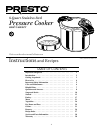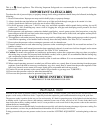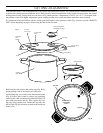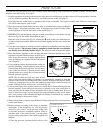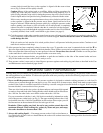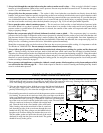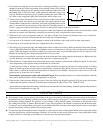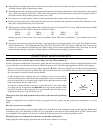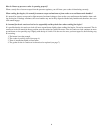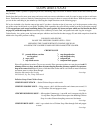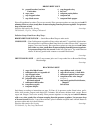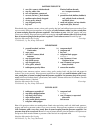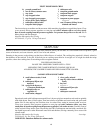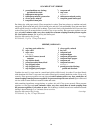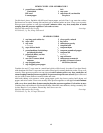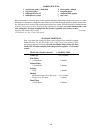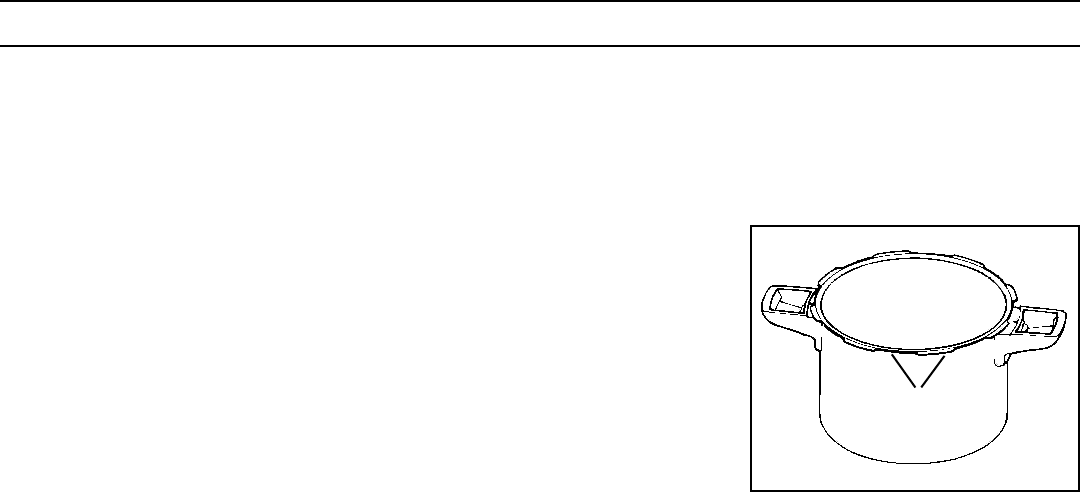
Apply Cooking
Oil Here
Fig. P
8
Many different cooking liquids can be used in a pressure cooker. Wine, beer, bouillon, fruit juices, and of course water all make
excellent cooking liquids in the pressure cooker.
Beautiful desserts and side dishes can be prepared in the pressure cooker using individual or small metal molds or glass custard
cups, which are ovenproof. Fill molds
2
⁄
3
full to allow for expansion of food, and fit them loosely into the pressure cooker in
the steamer basket. Do not fill the pressure cooker over
2
⁄
3
full.
If a recipe says to cook 0 minutes, release pressure immediately after pressure cooker reaches cooking pressure.
Release pressure quickly after cooking delicate foods such as custards and fresh vegetables. For other foods, like meats, soups,
and grains, let the pressure drop of its own accord.
When pressure cooking at high altitudes, the cooking time needs to be increased 5% for every 1000 feet above the first 2000
feet. Following this rule, the times should be increased as follows:
3000 ft. . . . . . . . 5% 5000 ft. . . . . . . . . . . 15% 7000 ft. . . . . . . . . . . 25%
4000 ft. . . . . . . . 10% 6000 ft. . . . . . . . . . . 20% 8000 ft. . . . . . . . . . . 30%
Because pressure cooking times are increased at altitudes above 2000 feet, an additional
1
⁄
2
cup cooking liquid will be
needed.
If you have any questions on recipes, time charts, or the operation of your pressure cooker, call or write: Test Kitchen, National
Presto Industries, Inc., 3925 North Hastings Way, Eau Claire, Wisconsin 54703-3703, phone 1-800-368-2194. You may also
contact us at our website www.GoPresto.com. When writing, please include a phone number and a time when you can be
reached during weekdays, if possible. Written inquiries will be answered promptly by letter or telephone.
quesTIons and answers
Occasionally the cover is hard to open or close. What causes this? What should I do?
In order for pressure to build inside your pressure cooker, the unit has a special cover which provides an airtight fit. Because of this,
you may find that on occasion the cover may be difficult to open or close. The following suggestions will help if this happens:
If the cover seems hard to close, be sure you have aligned the mark on the cover with the arrow on either of the body handles.
Move the cover until it drops into position. Then, press down firmly on the cover handles and rotate the cover clockwise until
the cover handles are directly above the body handles.
If, after browning meat or poultry, the cover is difficult to close, it may be due to
expansion of the pressure cooker body from heating. Remove the cover and allow the
pressure cooker body to cool slightly and try again. Do not place the pressure cooker
back on the burner until it is fully closed.
If necessary, to help make the cover easier to open and close, a very light coating
of cooking oil may be applied to the underside of the lugs on the pressure cooker
body (Fig. O) and/or on the sealing ring. Use a pastry brush, a piece of cloth, or your
fingertips and be sure to wipe off any excess oil.
What can be done if the food prepared in the pressure cooker has more liquid than
desired?
Simmer to evaporate the excess liquid. Next time you prepare the same recipe, you may want to use a tablespoon or two less
liquid.
How does one prevent overcooking?
Remember to begin timing as soon as you hear and/or see a steady flow of steam escaping from the pressure regulator. Reduce heat
to maintain a very slow, steady flow of steam. It is very important to accurately time the cooking period. A Presto
kitchen timer
is very helpful for this purpose. Also be sure to follow the recipe instructions for cooling the pressure cooker.
What if the food is not completely done after the recommended cooking time?
Simply bring the cooker back up to pressure and cook the food a minute or two longer.



